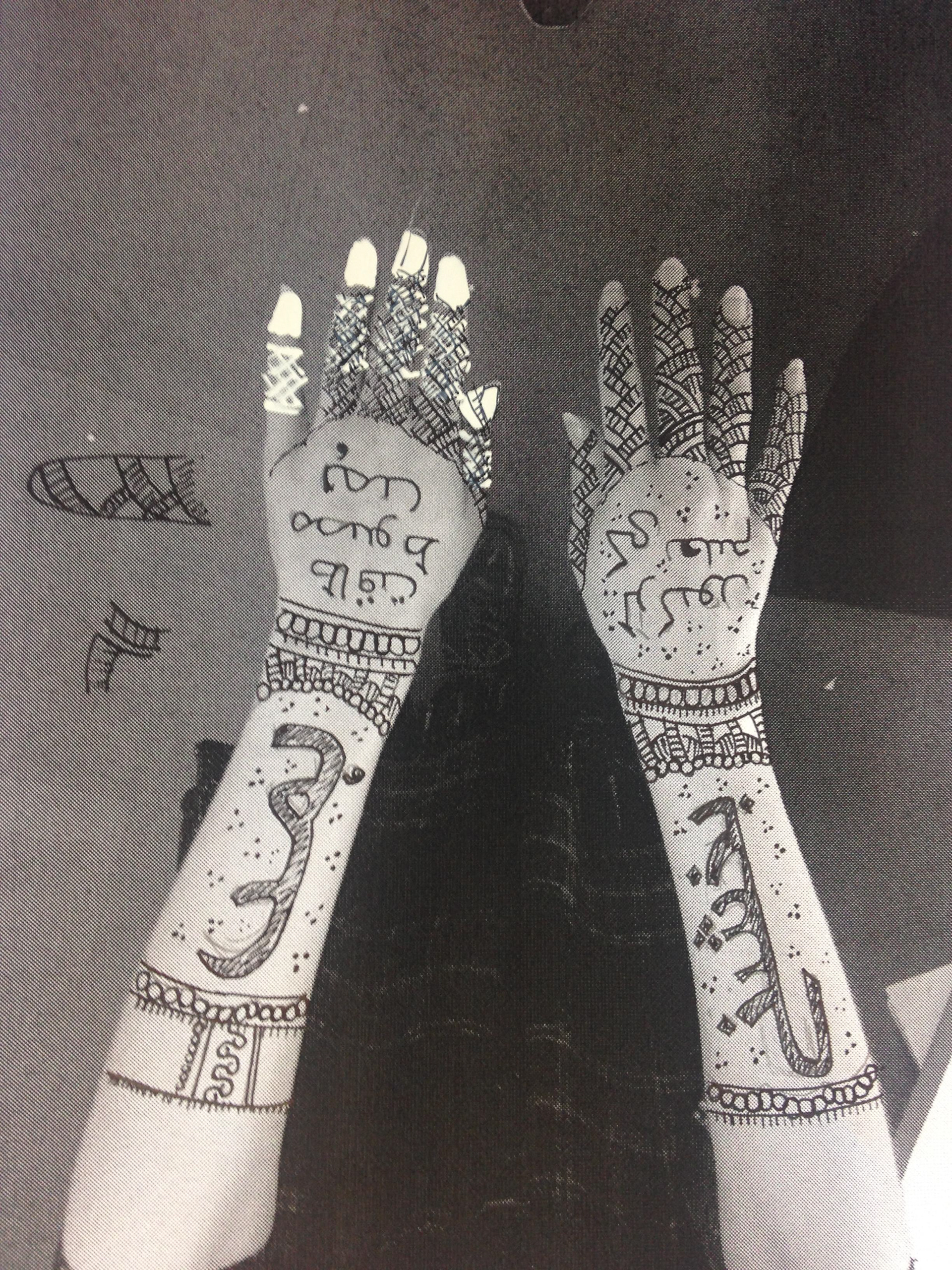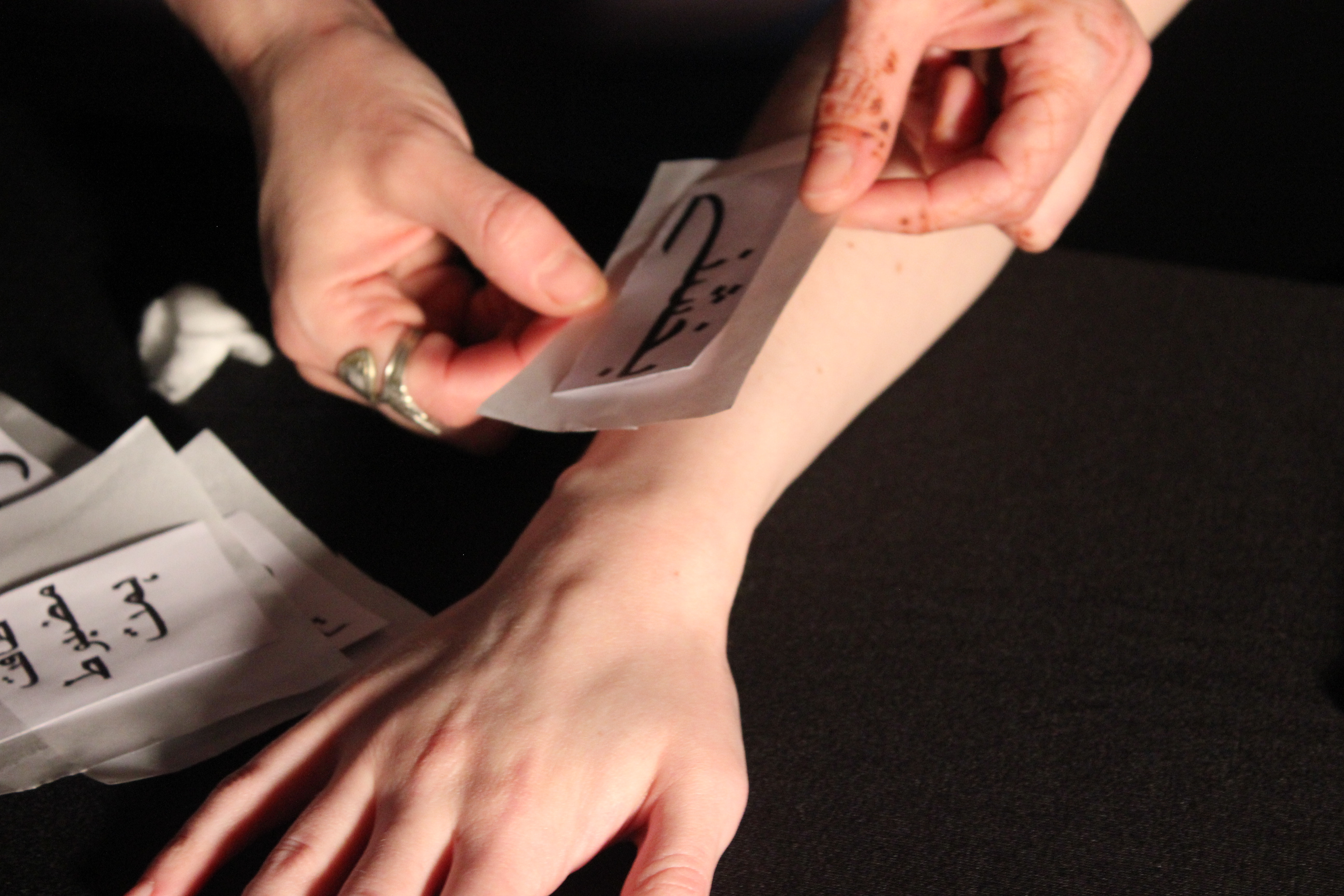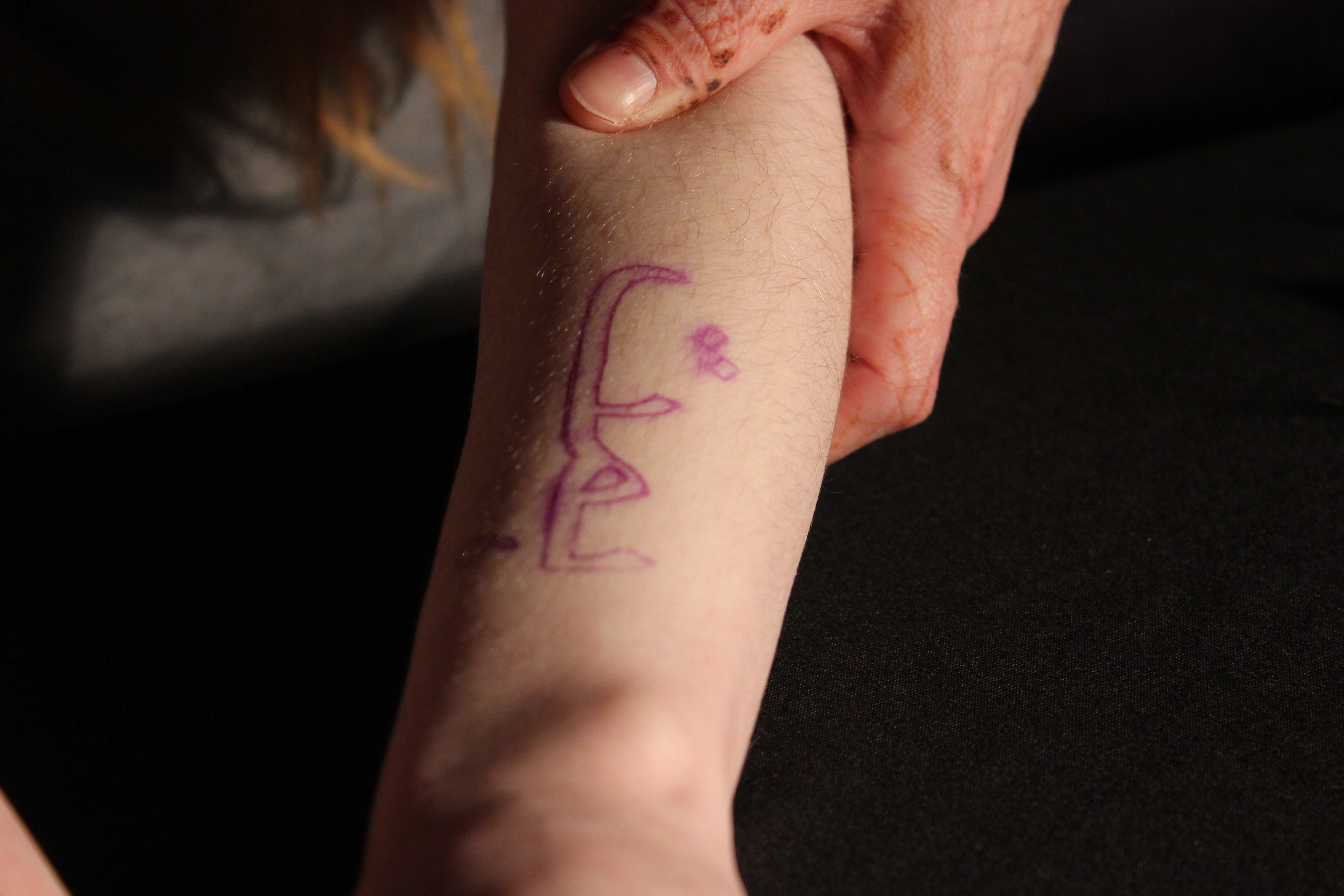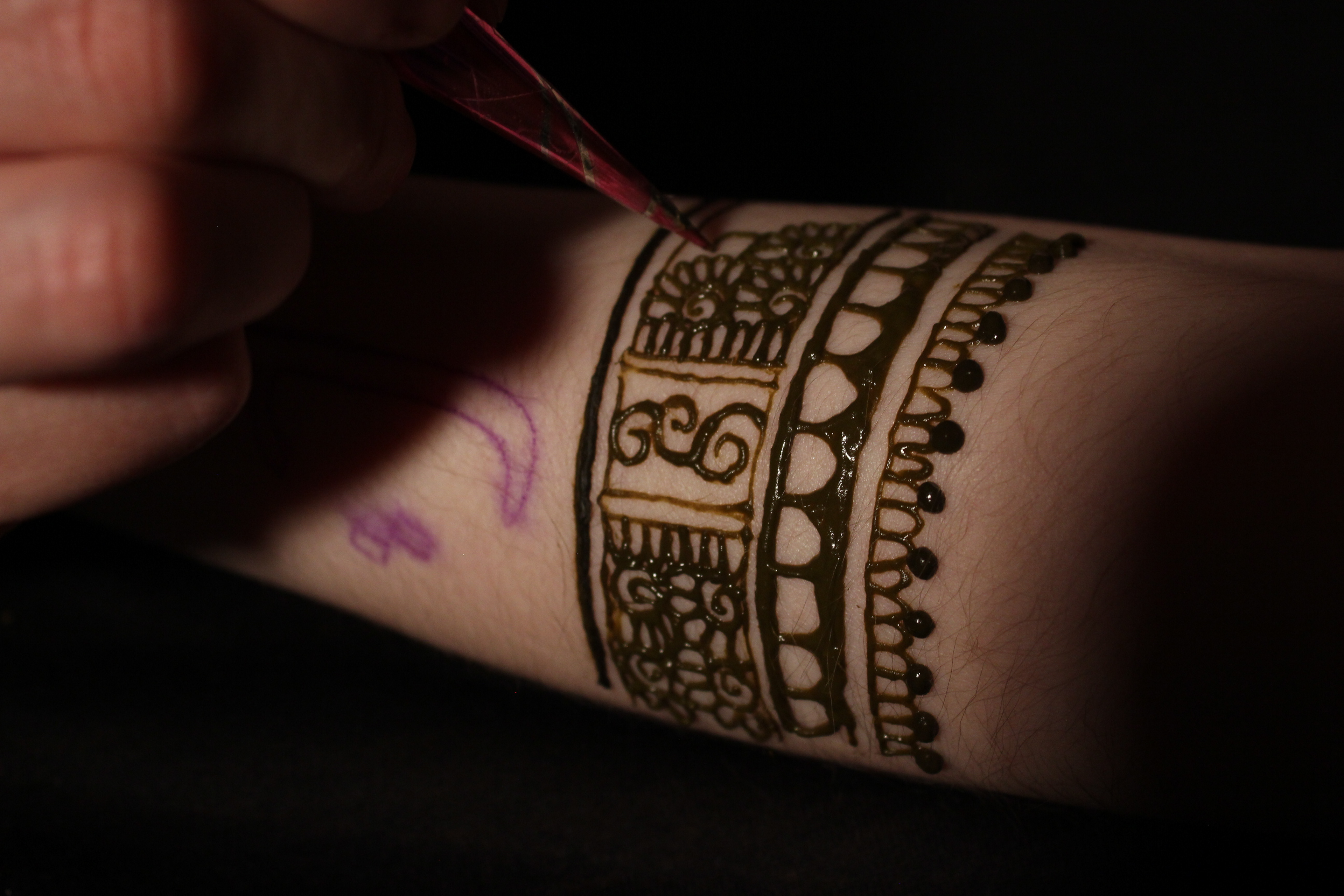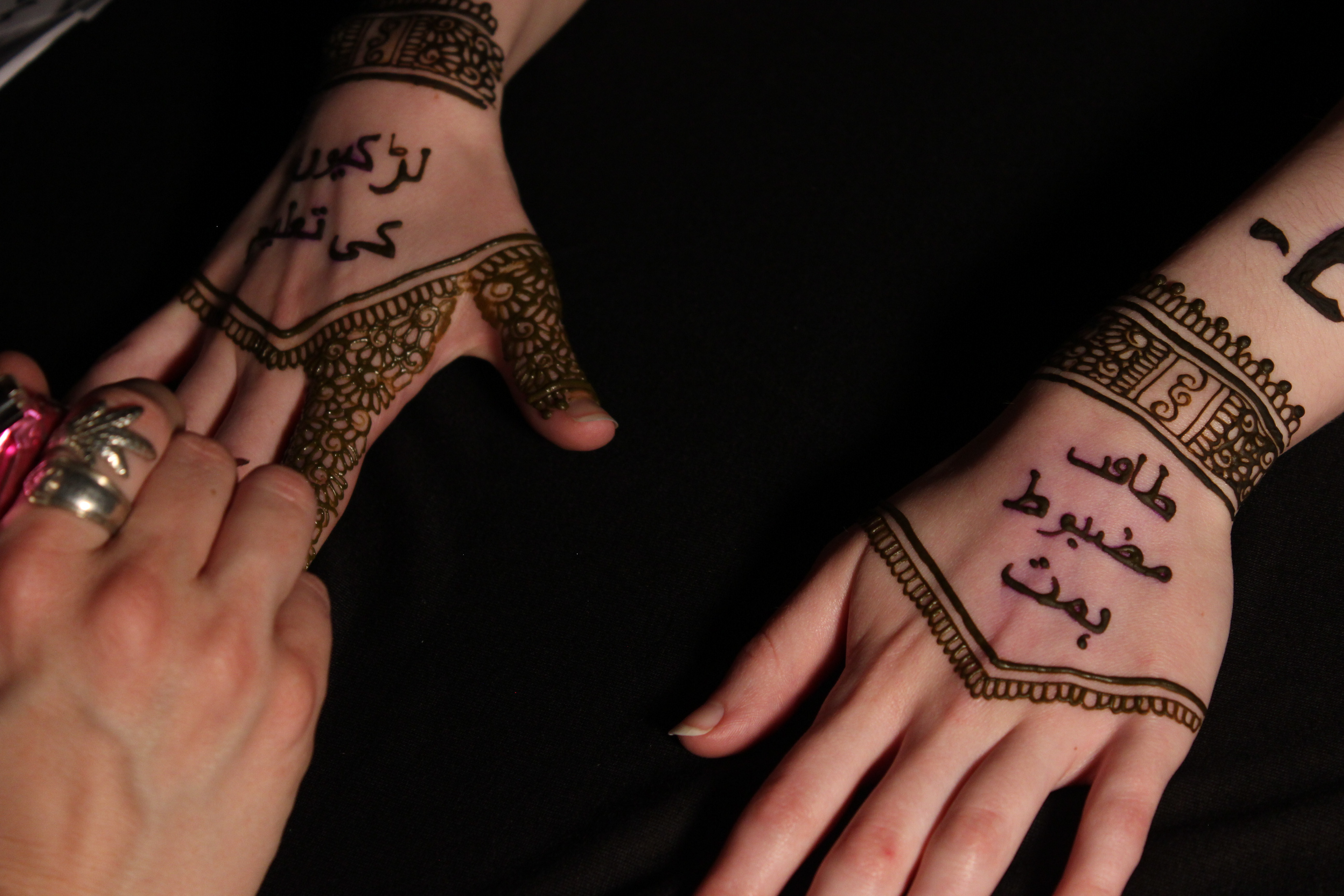Task: Translate a written, first-person account of a significant event, into a typographic experience.
Response: "Pakistan is a nation of 200 million people, of whom 52 million are youth, guaranteed a free and compulsory education” (Hossain, 2013)."
Unfortunately about half of this number, roughly 27 million children, do not attend school. One in ten of the entire world’s primary age children who are not in schools live in Pakistan. When the Taliban took over the Swat valley (Malala’s home) in 2009, girls’ schools were banned completely, forcing 120,000 girls to stop going to school. Malala Yousafzai then began blogging (aged 11) for the BBC about life as a school girl under Taliban ruling and campaigned publicly for girls’ education. On October 9th, 2012, as Malala (aged 15) came home from school on a bus filled with school girls, the Taliban Pakistan (TTP) attempted to murder her because she was “promoting secular and anti-Taliban values.” (Hossain, 2013).
Target audience: The MAC Belfast (Metropolitan Arts Centre) is a world-class arts venue located in the cultural quarter of Belfast city. It hosts local and international talent celebrating design. It attracts the target audience that is politically and socially aware and culturally curious. Malala as a person is explored in this exhibition from her witness account in her book “I am Malala.” Most notably she said, “That boy who shot me, I can’t imagine hurting him, even with a needle.” This speaks loudly of her forgiving, compassionate and courageous nature in contrast to the horrific attack.
Design Rationale: The solution for interpreting Malala’s witness account is the gallery exhibition, including the mehndi that I designed and commissioned a henna artist to do on a model, a typography wall produced by threading coloured string around nails spelling the word “peace,” in Urdu, a white dupatta printed with her account and a booklet, available for purchase. A limited colour palette of pink, white and black was chosen to capture Malala’s femininity and purity as well as the ever-present threat that followed her as she campaigned against the Taliban’s oppressive ruling. Pakistan’s half-moon flag inspired a delicate running graphic of a needle and thread supported by Garamond and Gill Sans because they, like Malala, are feminine, controlled and poised which creates a convincing tone of voice.
Culture: Women in Pakistani culture are intrinsic to the exhibition. Urdu, Malala’s spoken language is used to create the most authentic experience. Its scale is larger than the viewer so they can understand the powerful voice Malala has in her unwavering stance against the ban. Mehndi (the art & practice of applying temporary henna tattoos) is worn by women in Pakistan for special occasions as a symbol of celebration. Having “Girls’ Education,” hennaed onto skin is a sign of Malala’s outspoken public display against the Taliban’s repression which the visitor has the opportunity to have hennaed onto their skin to increase awareness of the exhibition and Malala Fund’s mission.
Malala is known to always wear a dupatta (a length of material worn arranged in two folds over the chest and thrown back around the shoulders) to protect her modesty. Printing the dialogue from the moment she was shot in the head onto a white dupatta has an enormous emotional significance since white is linked to purity, youth and innocence. It’s hard to imagine that anyone would see that as a threat. This was printed using two different fabrics and two different techniques. It is important for the story to appear on the right material so that it has the correct cultural fit. The exhibition is completed with a book, featuring Malala’s eye witness account reinterpreted through typography. The book is stitched using the same thread from the exhibition. The “threads” of the story are symbolised by the needle and pink thread, tying the experience into a holistic one where the viewer is left with the same quote that inspired the direction on the last page.
“I wouldn’t hurt him, even with a needle.”
Overview:
• Exhibition 5 walls designed including – henna artist (I am suggesting that a henna artist would be present as an experiential element), Fabric art and 3D stitched typography
• Printed Dupatta (head-dress)
• Booklet
Wall A: Visitor are met at the entrance with a short explanation of who Malala is and her story. There is a quote from Malala that reads, “I wouldn’t hurt him even with a needle.” This sets the direction for the entire exhibition by encapsulating her forgiving nature to a horrific attack.
Wall B: Using Malala’s culture and language is important, it creates an authentic experience for the viewer. Bold Urdu typography is accompanied by a running swirl formed from the Pakistan half moon symbol on the flag to represent a needle & thread.
Wall B: Mehndi (the art & practice of applying temporary henna tattoos) is worn by women in Pakistan for special occasions as a symbol of celebration. It is used in the exhibition to represent Malala’s position on celebrating the effect education has on girls. The act of having “Girls’ Education,” hennaed onto skin is a sign of Malala’s public resistance and stance against the Taliban’s repression. I designed and commissioned this Mehndi piece for a Henna artist to do onto a model's skin, before shooting it in a studio. Viewer’s have the opportunity to have the same phrase hennaed onto their skin to increase awareness of the exhibition and Malala Fund’s mission.
Wall C: Malala said they took three things when they attacked her, Weakness, Fear and Hopelessness. She gained three things also, Power, Strength and Courage.
Wall D: Girls’ education is what Malala campaigns for and is why she was attacked. The graphic is large in the background of the dupatta. Its scale is larger than the viewer so they can understand the powerful voice Malala has in her unwavering stance against the ban on girls’ education.
Wall D: Dupatta graphic with Malala's story. Printed boldly in the centre says Girls' Education.
Wall D: Printed Dupatta. Malala is known to always wear a dupatta (a length of material worn arranged in two folds over the chest and thrown back around the shoulders) to protect her modesty. Printing the dialogue from the moment she was shot in the head onto a white dupatta has an enormous emotional significance since white is linked to purity, youth and innocence.
Wall E: The final wall in the exhibition completes the graphic string direction by being made of actual string and finished with a needle. Typography is produced by threading coloured string around nails, spelling the word ‘Peace’ in Urdu.
The exhibition is completed with a book, featuring Malala’s eye witness account reinterpreted through typography. The book is stitched using the same thread from the exhibition. The “threads” of the story are symbolised by the needle and pink thread, tying the experience into a holistic one where the viewer is left with the same quote that inspired the direction on the last page.
“I wouldn’t hurt him, even with a needle.”
Book cover and spreads beneath.
Printed and hand bound book: The exhibition is completed with a book, featuring Malala’s eye witness account reinterpreted through typography. The book is stitched using the same thread from the exhibition. The “threads” of the story are symbolised by the needle and pink thread, tying the experience into a holistic one where the viewer is left with the same quote that inspired the direction on the last page.
“I wouldn’t hurt him, even with a needle.”
Behind the scenes: One of the major highlights of working on this was working with a local Mehndi artist. These are some of the pictures I took of the process.
